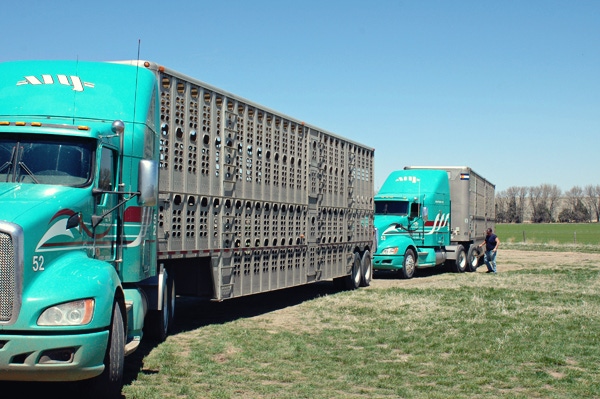Grazing demand sparks calf and feeder prices
Yearlings traded firm to $5 per cwt higher and calves sold up to $10-$15 higher as producers took advantage of the first week of weather—out of several—conducive to widespread marketing.
March 14, 2015

Yearling feeder cattle sold firm to $5 per cwt higher this week, according to the Agricultural marketing Service (AMS). Calves sold as much as $10-$15 higher compared to the most recent broad market test.
Grazing demand, cattle moving from wheat pasture in the South Central Plains, and the first week of weather—out of several—conducive to widespread marketing, helped push the market ahead.
“It is currently prime time for the stocker market during the narrow window between the end of wintry weather and the beginning of warmer weather and green grass in the major cattle production areas,” AMS analysts say. “Over the weekend, weather patterns turned spring-like across much of the country and it seemed this week that grass fever could be infectious for the rest of the month.”
In other words, tight calf and feeder supplies continue to run ahead of concerns about demand and increased production of competing meats.
Even as U.S. producers expand the cow herd, Tim Petry, North Dakota State University livestock economist, points out Canadian producers continue the herd contraction that began there in 2006. He explains in this week’s In the Cattle Markets that there were 2% fewer beef cows north of the border Jan. 1, according to the recent report from Statistics Canada. The U.S. herd increased 2%. While replacement heifers increased 4% in the U.S, they declined 1.5% in Canada.
“Canada’s beef cow herd (3.824 million) is less than the 4.18 million head that were in Texas on Jan. 1,” Petry adds.
Andrew P. Griffith, University of Tennessee agricultural economist, expects calf and feeder prices to follow a more seasonal pattern, unlike the past couple of years. For feeder cattle, he says that would mean prices increasing until early summer, peaking in late July to mid August.
“Feeder cattle futures contract prices on nearby and deferred contracts have increased $15 to $19 per cwt from their contract lows the last week of February,” Griffith says, in his weekly market outlook. “The increase in futures contract prices may be providing a favorable pricing opportunity for feeder cattle to be marketed in future months. The price increase has also provided more favorable rates for purchasing options and insurance policies.”
Feeder Cattle futures were an average of $2.31 higher week-to-week ($1.30 to $3.40 higher). They lost an average of $1.74 on Friday, receiving pressure from bearish outside markets—due in part of an 11-year high in the value of the U.S. dollar—and tumbling Lean Hog futures.
These same pressures, along with growing pork and poultry supplies, and the inability to accelerate wholesale beef values, made packer buyers skittish all week.
Through Friday afternoon, the only major cattle feeding region reporting a trend was Kansas with live sales steady with the previous week at $161 per cwt on limited trade and light demand.
“Seasonally speaking, fed cattle prices will be supported as the market moves through early spring,” Griffith says. “The primary resistance to increases in fed cattle prices will be the retail price of beef and its inability to moderate in the near term. Cattle feeders will find it difficult to pressure fed cattle prices continually higher due to the difficulty packers will have pressuring boxed beef prices higher.”
Choice boxed beef cutout value was $4.36 per cwt lower week-to-week, ending Friday at $244.12 per cwt. Select was about even with the prior week at $244.07.
“Packers are finding it difficult to pay higher prices for fed cattle while beef cutout prices are faltering,” Griffith explains. “Neither Choice cuts nor Select cuts are immune to the price decline. However, Choice beef is feeling more of the pressure than Select beef.”
Live Cattle futures were an average of 80¢ lower week-to-week (35¢ to $1.82 lower).
Corn futures were an average of about 6¢ lower week-to-week. That was with the monthly World Agriculture Supply and Demand Estimates (WASDE) issued this weak increasing the season-average farm price for corn 5¢ at the midpoint to $3.50-$3.90 per bushel.
Although WASDE estimated total red meat and poultry production lower than the previous month, forecasts for pork and poultry supplies continue higher. The projected decrease in overall supply comes from lower beef production, due to fewer fed cattle harvested in the first quarter, as well as carcass weights made lighter by winter weather.
Other resources to enjoy:
3 steps to negotiating a great cow lease
9 new haymaking tools for the 2015 forage season
Experts say ranching done right improves the environment and wildlife habitat
About the Author(s)
You May Also Like




.png?width=300&auto=webp&quality=80&disable=upscale)
